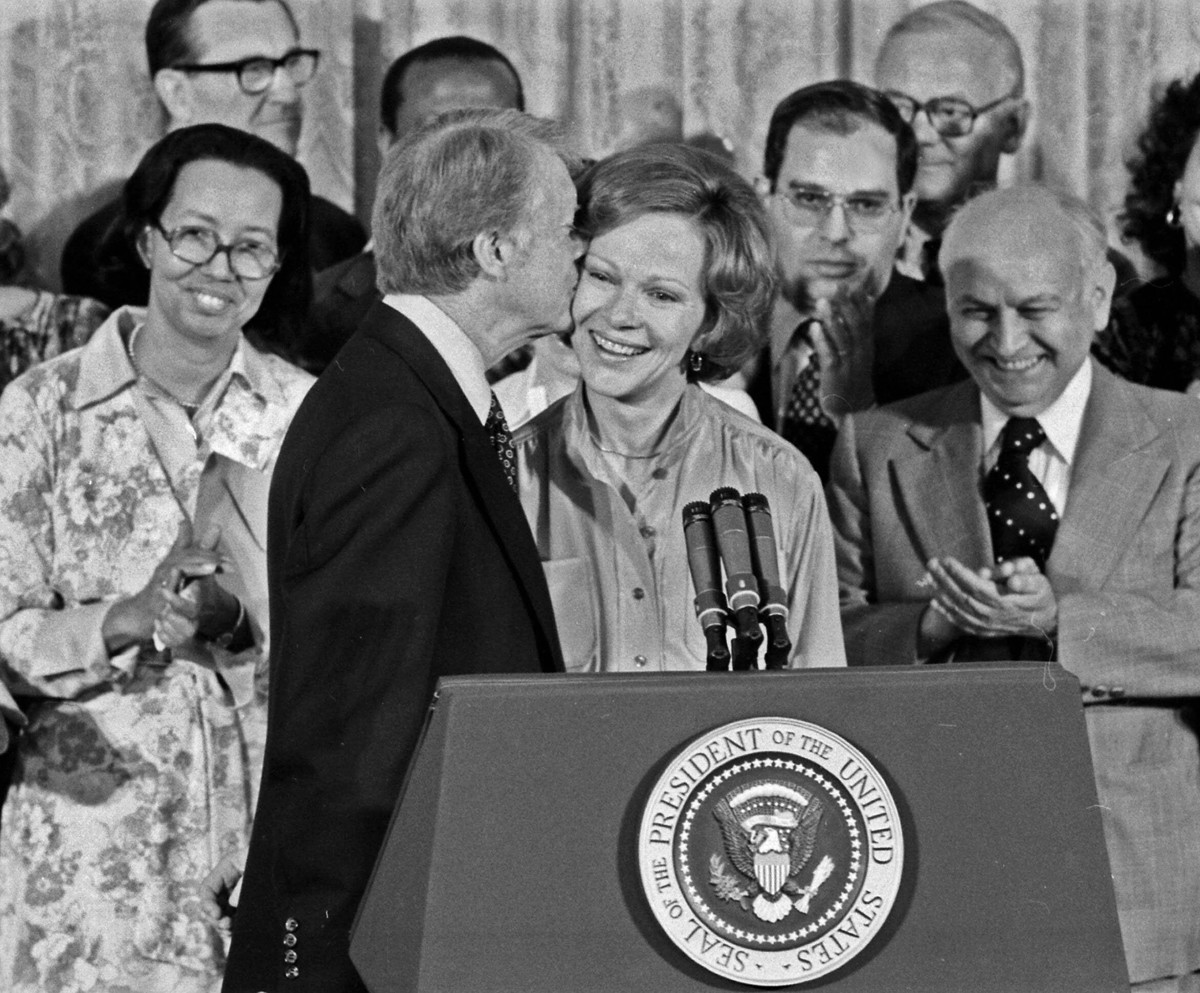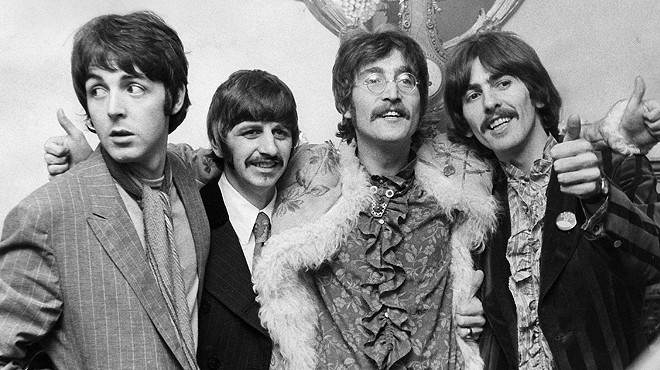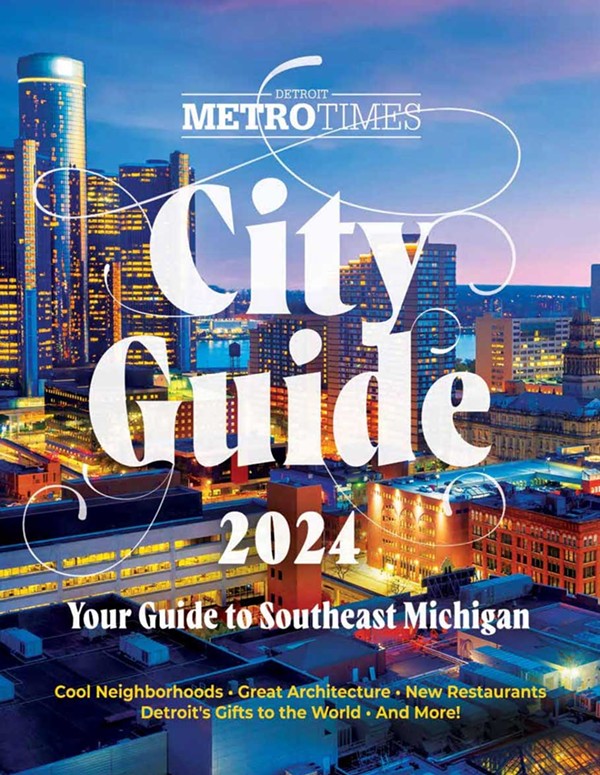On a trip to Georgia last month, it felt like a good time to visit the Carter Center in Atlanta.
Former president Jimmy Carter had recently entered hospice care. Soon, his wife, Rosalynn, would join him. She died last week at age 96. Her husband — 99 years old and physically diminished — attended her televised memorial service in a poignant goodbye after a marriage of 77 years.
The Center, a library and museum, honors the 39th president, a Democrat who served from 1977 through 1981. Before him came eight years of Republican rule from Richard Nixon and Gerald Ford. After Carter, 12 more Republican years under Ronald Reagan and George H.W. Bush.
Remember the big issues that faced Carter?
Violence in the Middle East. American hostages held by foreign terrorists. Economic inflation at home. Profound changes in Detroit’s auto industry. Trepidation about oil and gasoline. Debates about renewable energy. High mortgage rates. And a deep, pervasive cynicism among the public toward the political process.
“Plus ça change,” as the French might say.
Not all my memories triggered at the Carter Center were of public events and issues. The personal connection of my family to the Carter family is fleeting and recent but treasured; and a decision by Carter long ago led to one of the strangest interviews of my journalism career.
The personal connection is with two of my grandchildren, big sister and little brother. Not long ago, they were in a public building when — who happened to walk by? None other than Jimmy and Rosalynn Carter, the most out-and-about former First Couple ever.
The kids’ dad alertly seized the photo op. So two young descendants have a special picture as a future keepsake.
My unusual interview experience came 43 years ago in Atlanta when Carter was still president and he sent the American military to Iran on a mission to rescue the 52 American hostages held by Islamic militants. The mission failed; aircraft crashed; and eight Americans died in the desert.
At that time, I happened to be in Atlanta to interview Hank Aaron for a Detroit Free Press series called “Blacks and Baseball.” In that I also wrote about television sports for that paper then, I tried to talk to Ted Turner, whose Atlanta Braves were a big national hit on a new platform called “cable television.”
Also a yacht-racing bon vivant who looked like Clark Gable as Rhett Butler in Gone With The Wind, Turner was about to launch a news channel called Cable News Network, also known as “CNN.”
In that he cared about international affairs, I walked into his office and sat down to a volcanic eruption of invective and anger spewed toward President Carter. I wish I’d tape-recorded Turner’s tantrum.
Turner began shouting at me, red in the face and waving his arms, spittle flecking his lips, as if he was yelling directly at Carter. “How could you do this?” was the gist of most questions. “What is wrong with you?”
I got the distinct impression that Turner felt humiliated because Carter, like Turner, represented Georgia in an era in which it tried to shed some of its Southern stereotypes. I’d dealt with angry athletes and coaches before, but never a man who seemed to be foaming at the mouth and this near violence.
Was he about to challenge me to a duel? At that point I did something I’d never done before during an interview and haven’t done since: I stood up and walked out of Turner’s office as fast as possible.
“So soon?” his surprised secretary asked as I burst through the door and past her.
“He’s nuts,” I said.
Of course, the Carter museum includes an exhibit on his fatal rescue mishap, probably the worst moment of Carter’s administration. In that section, labeled “1980,” there also was a reference to the CNN launch and a big picture of Ted Turner, looming over the room. (It made me shiver.)
But the building also displays many photos and mementos of the high point of the Carter Administration, the Camp David Accords for Middle East peace in 1978 between Egypt and Israel.
Until recently, I never knew that Carter pushed the peace process by taking the leaders Anwar el-Sadat of Egypt and Menachem Begin of Israel on a visit to the American Civil War battlefield at Gettysburg. The two men won the Nobel Peace Prize for 1978 and Carter won one in 2002.
The museum also emphasizes Mrs. Carter’s attendance at meetings of her husband’s cabinet and National Security Council, and about her travel to Latin America to confront human rights abuses. She successfully encouraged public opinion to regard mental illness as legitimate and treatable.
Unlike some former First Couples, the Carters received more acclaim for work outside the White House than while in it.
“In the ensuing four decades, in the nation’s longest post-presidency, the Carters set a transcendent example of humanitarian public service,” the Orlando Sentinel wrote. “[They were] a luminous example to others and an inspiration to a nation beset by public cynicism about Washington and its politicians.”
Throughout the building, in various contexts, a visitor encounters photos of them together. Video and audio exhibits echo the words “human,” “humanity,” “humane,” and “peace.”
So, too, are the grounds peaceful at the Carter Center, with a distant view of downtown Atlanta, a fountain, and a walking trail around a lake. Also there is a haven for migrating monarch butterflies left by Rosalynn.
From a selfish, old Detroit sports writer point of view, I found one of the most charming exhibits in the museum to be one that replicated the kind of home Carter grew up in as a boy in Plains, Georgia, in the 1930s.
Alongside period furniture there stood a radio of that era. Among the recordings playing through its speaker was one of a baseball announcer (Ty Tyson?) calling a Hank Greenberg fielding play for the Tigers in the 1935 World Series against the Chicago Cubs.
Another broadcast played the 1938 heavyweight boxing championship victory by Detroit’s Joe Louis over Nazi Germany’s Max Schmeling.
Detroiters with long memories might recall how Mayor Coleman Young — a Louis friend and advocate — built Joe Louis Arena with the help of money that flowed from Washington to Detroit during the Carter era.
Coincidentally, the first major non-sports event at the JLA was Reagan’s nominating convention to run against Carter. Imagine that. And it is fitting and proper that Rosalynn Carter requested a performance at her memorial service of the song “Imagine,” John Lennon’s secular hymn.
It includes the words “Imagine all the people living life in peace… You may say I’m a dreamer…” Coincidentally, Lennon died a month after Carter lost his bid for re-election to Reagan, but his dream of human harmony lived on in people like the Carters.
After leaving the White House, the former president taught Sunday school. He and Rosalynn dedicated the rest of their long lives to eradicating disease and building shelters for less fortunate human beings. Imagine that, too.
Subscribe to Metro Times newsletters.
Follow us: Google News | NewsBreak | Reddit | Instagram | Facebook | Twitter








